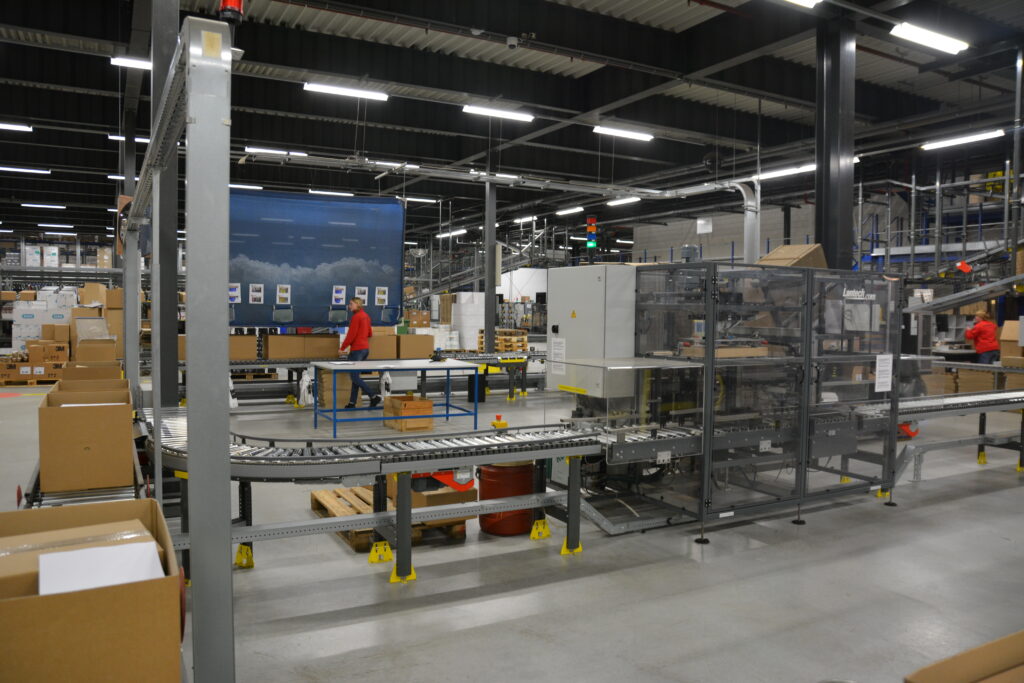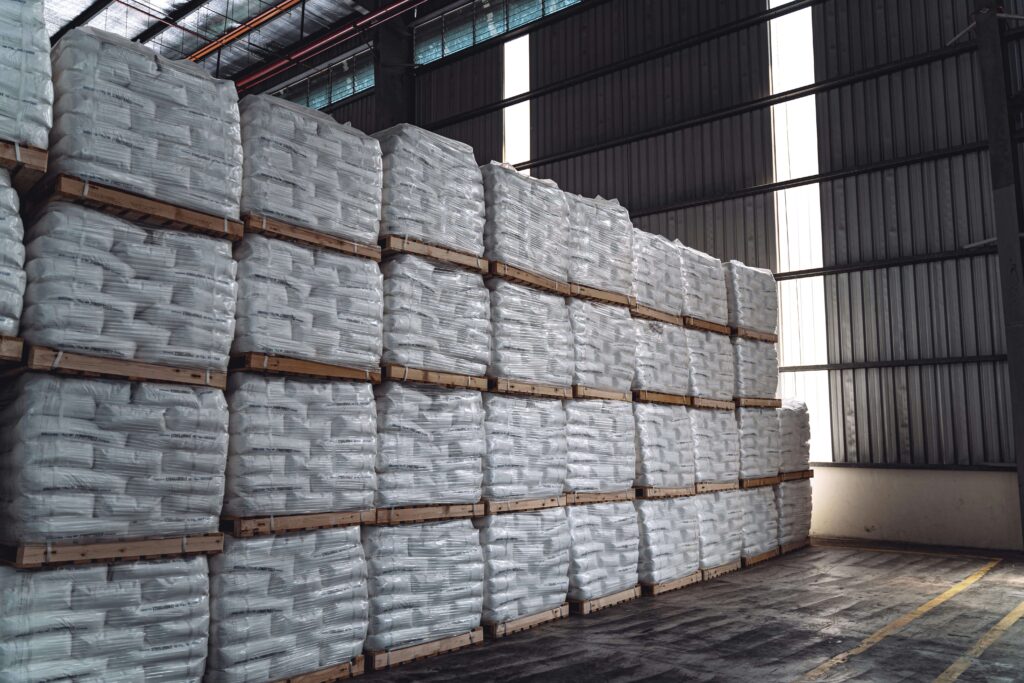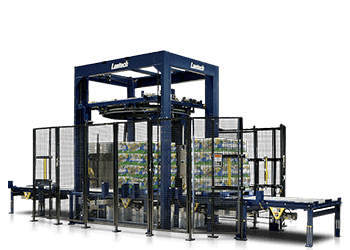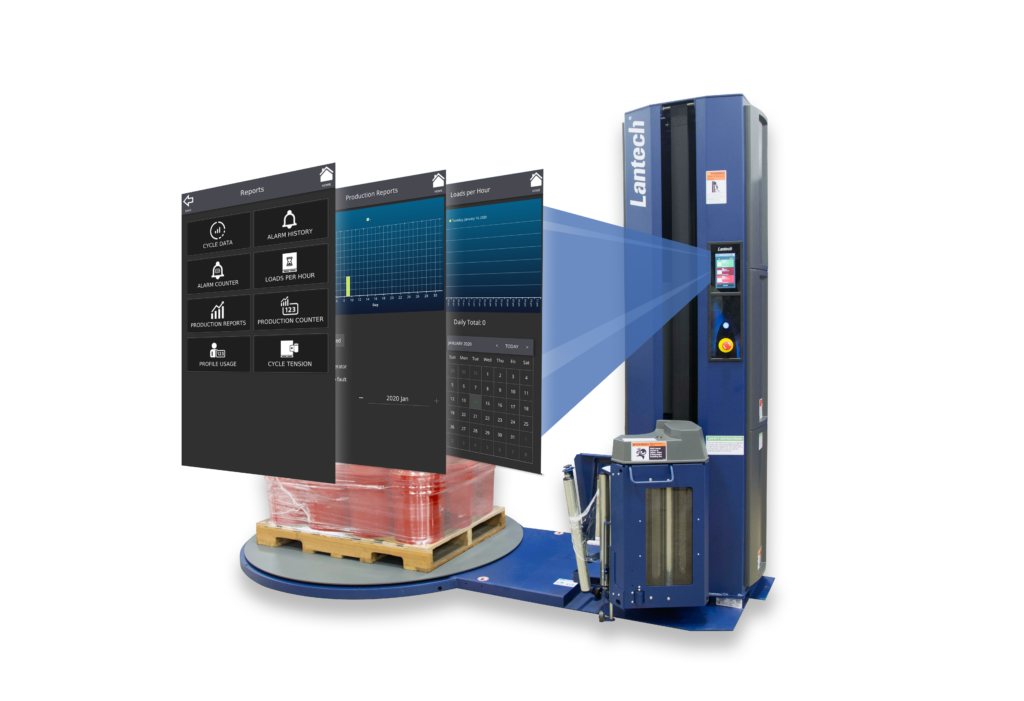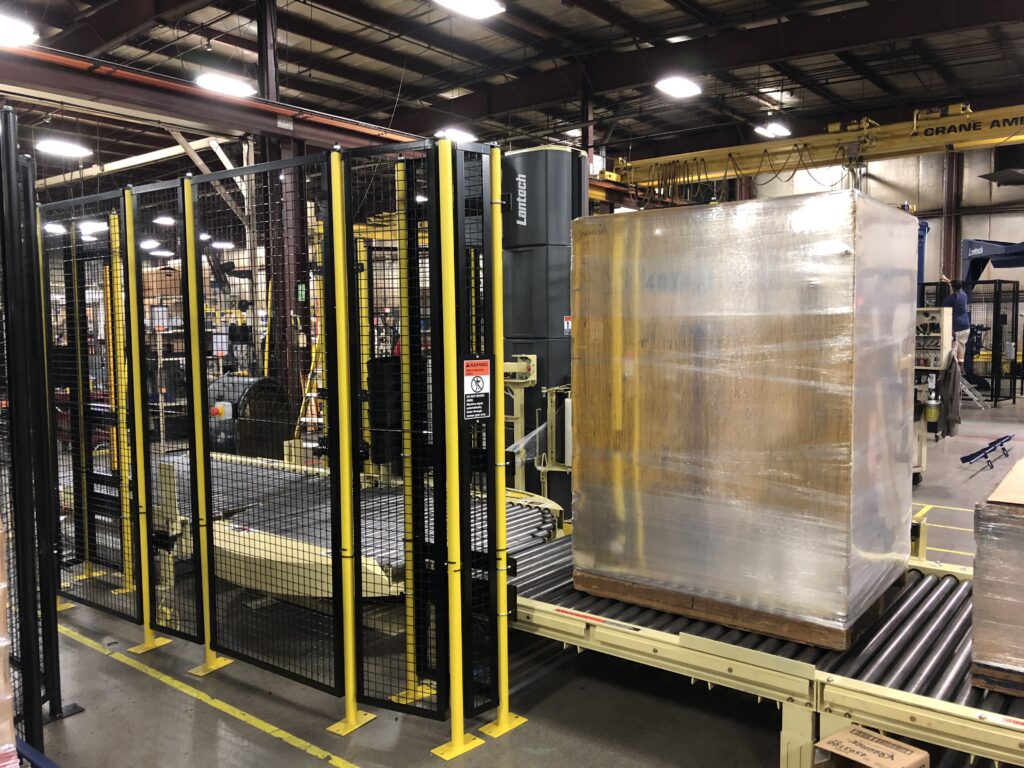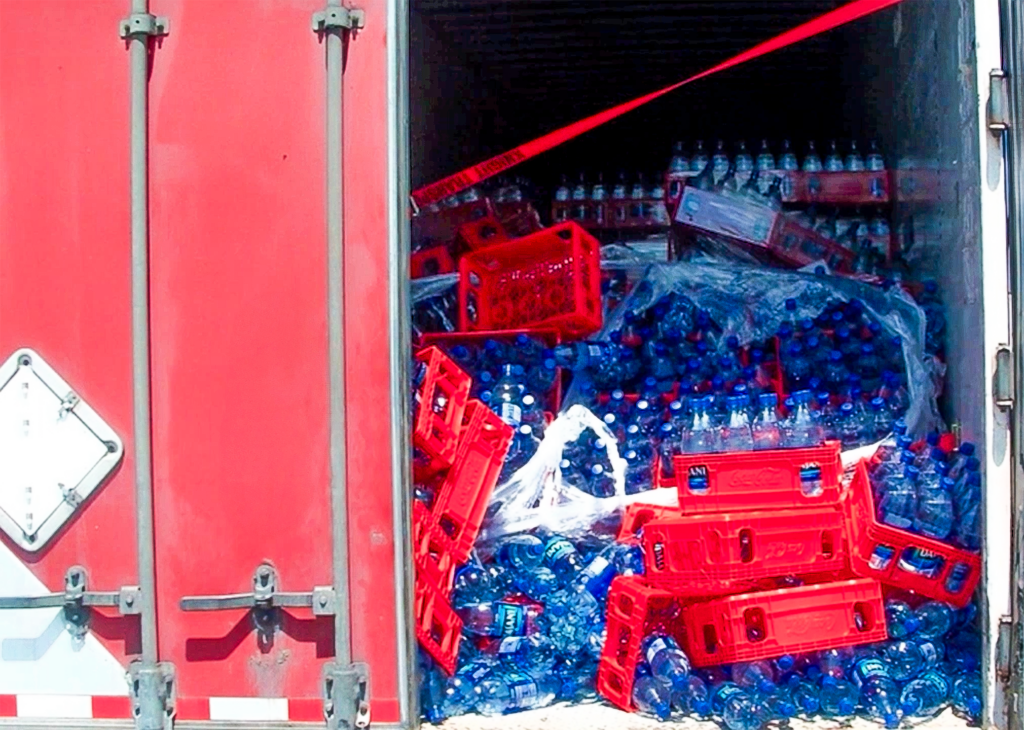If you are a manufacturing company or distributor, you most likely are using a warehouse or distribution center to make sure you are able to store inventory, replenish store fronts, and easily send goods to customers or receive goods for manufacture or distribution.
First Things First, Do You have all The Tools To Set You Up for DC Or Warehouse Slotting?
 Before you begin a project for warehouse slotting, ensure that you have aisles, bays, shelves and slots clearly marked with large and easily identifiable location signs. A slot can be part of a shelf or the entire shelf. Your Warehouse Management System (WMS) must reflect these storage locations for proper location control in your warehouse or DC. As a Consultant, I have gone into many warehouses and DCs that have no locations identified. This is a sign of poor warehouse operations management. You cannot leave locations to people that have been there a long time and “it is in their head.” All other members of the warehouse operation team must ask this one person where everything is. This is a waste of time and efficiency. This may be job security for the senior warehouse person, but it is not good management should something happen to this “knowledgeable person,” and it can happen.
Before you begin a project for warehouse slotting, ensure that you have aisles, bays, shelves and slots clearly marked with large and easily identifiable location signs. A slot can be part of a shelf or the entire shelf. Your Warehouse Management System (WMS) must reflect these storage locations for proper location control in your warehouse or DC. As a Consultant, I have gone into many warehouses and DCs that have no locations identified. This is a sign of poor warehouse operations management. You cannot leave locations to people that have been there a long time and “it is in their head.” All other members of the warehouse operation team must ask this one person where everything is. This is a waste of time and efficiency. This may be job security for the senior warehouse person, but it is not good management should something happen to this “knowledgeable person,” and it can happen.
Warehouse Slotting determines the most appropriate storage location for each item in your warehouse. The benefits of proper warehouse slotting are sometimes overlooked by those responsible for warehouse operations. Perhaps these people don’t know what slotting is, or what the potential benefits slotting brings to warehouse efficiency. These people simply need a slotting education.
To understand warehouse slotting, understand: There is a place for everything and everything in its place.
Let’s look at the basics of slotting in areas we are all familiar with daily. We actually do quite a bit of slotting in our day-to-day activities. If you look in your kitchen cupboards, you will likely find that the dishes and cooking items you use most frequently are located near the front of easily accessible cupboards. If you live in an area that gets snow, you probably keep a snow shovel close to your garage door or the door to your house. The credit card you use the most frequently is likely located in an easily accessible spot in your wallet. If you look at your workbench, the items you need to maintain your home are readily available for use. This is all warehouse slotting is at its most basic premise. But now let’s look at the key areas and tactics you can employ for effective warehouse slotting practices.
9 Warehouse Slotting Considerations to Create an Effective Warehouse Management Practice
1. Making the Items We Use the Most Easily Accessible
All we’re doing here, in the kitchen example, is making sure those things we use the most frequently are the most easily accessible in the warehouse or DC. In
doing so, the things that we don’t use frequently will often naturally work their way back into those less accessible areas (slots).
In the warehouse, we essentially want to apply the same logic. The items in your warehouse each have their own unique combination of characteristics. One of the most important characteristics is the frequency of physical touches for each specific item. “Physical touches” refers to each time someone has to go to the location the item is stored in to do something (pick an item for an order, put away receipt, etc.). As physical touch activities go, the one that gets the most attention is order picking. So not surprisingly, most warehouse slotting is focused on improving the efficiency of order picking. It also increases throughput to your customer by filling their orders in a more systematic fashion. The company’s main mission must be to exceed the customer’s expectations. This is one way to do that. Turn the customer’s orders around in a timelier manner to meet the customer’s needs.
2. Rank All Items by Frequency of Use
The typical warehouse slotting project will start by ranking all items in the warehouse based on the frequency each is picked. This is very easy to do and simply involves creating a report or query(s) based on either your sales order detail file, a transaction history file, or a movement history file (if you have a WMS). You will generally run this against a full year’s transactions, and count all sales transactions for each item, then sort the report or query by the total sales transactions in descending order.
3. Remember Pareto’s 80/20 Principle? Use it As Your Warehouse Slotting Principle Guide
The first item on the report is your fastest moving item, the second is the second fastest moving, and so on in descending order. This means that 20% of these top items equals 80% of the total items. You should concentrate on this 20% and have them available for picking upfront in your warehouse or DC. Now remember, we’re talking about the total number of times an item is picked here, not the total quantity that is picked. If we did the latter, then an item that was picked a thousand times last year with a pick quantity of one unit would be ranked the same as an item that was picked one time with a pick quantity of a thousand. Obviously, from an order-picking efficiency perspective, we want that item that was picked a thousand times in a more accessible slot than the one that was picked once, even if they both represent the same unit sales.
4. Take a Look at the Characteristics of Locations
Now that we have our times-picked ranking that shows what our fast movers are, we need to determine where we want our fast movers to go. So now we need to look at the characteristics of our locations. First, we want to look at the distance an order picker would need to travel to get to the location, and how accessible the location will be once the picker gets there. A location that requires a ladder or lift truck to access is not as easily accessible as one that can be directly accessed from floor level. And even within those locations that can be accessed from floor level, those that don’t require a worker to bend over or reach up are more easily accessible than those that do.
As to the distance an order picker would need to travel, things get a little more complicated. That’s because we need to consider exactly how orders are picked in your operation. If a picker has a fixed starting point and moves to a location for a single pick, then returns to that fixed location, we can simply rank the locations by the distance from the fixed starting point. This would often be the case in a full pallet picking operation where a lift truck operator can only pick one pallet at a time before returning to the starting point or the shipping dock.
But what if a picker follows a fixed picking path through several aisles before returning to the starting point? In this case, each location along that fixed picking path will be ranked the same as far as distance goes, because the picker is going to go past each location anyway. In many warehouses, you actually have a combination of the previous examples, so you need to take all this into consideration when ranking your locations.
5. Matching Fastest Moving Items to Best Locations, So On, and So Forth….but Look out for Appropriate Slot Sizes
Now that we have our locations ranked and our items ranked, we can just take our fastest moving item and slot it in our best location, then take our second fastest moving item and put it in our second-best location, and so on.
When you have items with greatly varying sizes you will also likely have locations (slots) of varying sizes. So you obviously need to make sure the items are going into slots that are appropriately sized. An item’s size combined with the quantity picked also needs to be considered. In both these cases, the size of the slot is driven by the size of the item and how much of that item needs to be stored there. Slot size is important when looking at order picking efficiency because larger slots result in your order pickers needing to travel further when moving past these slots to get to other slots. What we really need to look at here is how many picks we can get out of a specific amount of pick face.
If the warehouse or DC has a somewhat bulky item that gets 500 picks per year and requires a pick face four feet long by four feet tall, but also have five smaller items that each get only 200 picks per year and all five items combined will fit in the same four foot by four-foot pick face as the bulky item, we are actually better off giving the five slower moving items a better slot than the bulky faster moving item. That’s because our objective with slotting is to get the most picks with the least amount of traveling.
6. Consider the Characteristics of Your Slot Size, Weight, Durability, and Material
What quantity should you expect a slot to hold? Larger slots will stretch out your pick paths and, therefore, result in less efficient order picking. But smaller slots require more frequent replenishment. You can actually apply costs to these activities and calculate the point that makes the most sense financially, but this can get complicated. I will typically do some rough calculations by product group, and then put together some guidelines to apply to each product group.
If you have it in your budget, there is warehouse slotting software that can help you with this project.
Other slotting considerations would include the weight of the items being stored or other characteristics that may make some slots more appropriate than others. Generally speaking, you want to keep your heaviest items lower, but this doesn’t necessarily mean the need to go in floor locations. You really need to look at how you pick and stock these items. If, for example, you are picking and stocking these heavy items from a raised picking cart, the best slots for these items would be levels close to the level of the cart. And then there are more obvious characteristics, such as hazardous items being stored in specific areas designed for hazardous items, or cold storage items being slotted in cold storage.
Some operations may need to consider load building when slotting their products. This is important if you are picking directly to your shipping pallets and need to make sure heavy items go on the bottom, and more fragile items go on the top.
You may also want to consider related items that are often picked together on the same order. This takes a bit of analysis, but can be very beneficial in some operations. Obviously you need to consider this within the context of your pick paths, because the benefits of slotting these items together will vary based on your pick paths.
If you run multiple pick zones, you may also need to consider zone balancing. This involves controlling the number of picks that will come out of each pick zone. This can be critical when you apply automation carrousels, etc., but can also be very important in more manual operations.
7. Dynamic Slotting Considerations
You may run into this term when looking at the functionality of certain Warehouse Management Systems (WMS). Dynamic slotting: What it means is that the WMS has the capabilities to set up new or temporary slots for items allocated for known shipments. If you know you are going to have a lot of picks for a specific item today, you may choose to create a new temporary slot right by the picking/shipping area rather than sending the picker to the normal slot for faster turnaround time to your customer.
8. Understand the Other Affects of Warehouse Slotting
Warehouse slotting also affects put away, daily cycle counting for Inventory Records Accuracy and root cause analysis, physical inventories, and overall space efficiency. We also need to determine when to replenish pick slots and when to re-slot based on item frequency changes. As you start taking into account all the potential variables, it does begin to get complicated. There may be a need for that slotting software mentioned earlier. The reality is, absolute optimization of slotting is simply impractical for most operations. But that doesn’t mean you give up and do nothing. By understanding the variables in your specific environment, you can use your knowledge of these variables to help you approximate their impact on groups of products and locations. If a variable doesn’t make a significant difference in your specific operation, don’t waste your time trying to incorporate it. If a variable is important but is way too complicated to calculate on an item-by-item basis, try to put together some guidelines that help to take this variable into account. And try not to get too overwhelmed by the complexity of all these calculations. Use the KISS method and “keep it simple and stupid”.
You don’t have to have the perfect warehouse slotting plan. Even a very simple ranking of items purely by times-picked and then slotting them without taking into account any other variables will prove to be a significant improvement over no warehouse slotting.
9. Warehouse Slotting and DC Slotting Software
Warehouse/DC slotting software alternatives for review and investigation:
- Warehouse Vision
- Slot3D
- Red Prairie
- Latitude Warehouse Slotting
How many warehouses and DCs slot and re-slot? The answer is, not enough. The reason being that the warehouse can’t “find time to do slotting and re-slotting” If they use Pareto’s 80/20 principle in all the activities they do, they can accomplish warehouse slotting. What other considerations would you share about effective warehouse slotting? Let me know in the comments below!
Check out some of our other posts related to warehouse management and efficient warehouse operations:
- 3 Obvious Things About Stacking Pallet Loads People Often Overlook
- 3 Ways A Stretch Wrapper Can Make Your Forklift Driver More Efficient
- Forklift vs. Pallet Jack – Your Stretch Wrapper Needs to Answer “Yes”
About the author:
 Adam Robinson oversees the overall marketing strategy for Cerasis including website development, social media and content marketing, trade show marketing, email campaigns, and webinar marketing. Mr. Robinson works with the business development department to create messaging that attracts the right decision makers, gaining inbound leads and increasing brand awareness all while shortening sales cycles, the time it takes to gain sales appointments and set proper sales and execution expectations.
Adam Robinson oversees the overall marketing strategy for Cerasis including website development, social media and content marketing, trade show marketing, email campaigns, and webinar marketing. Mr. Robinson works with the business development department to create messaging that attracts the right decision makers, gaining inbound leads and increasing brand awareness all while shortening sales cycles, the time it takes to gain sales appointments and set proper sales and execution expectations.
This post was published on March 14, 2017 and updated on January 3, 2020.
March 14, 2017


